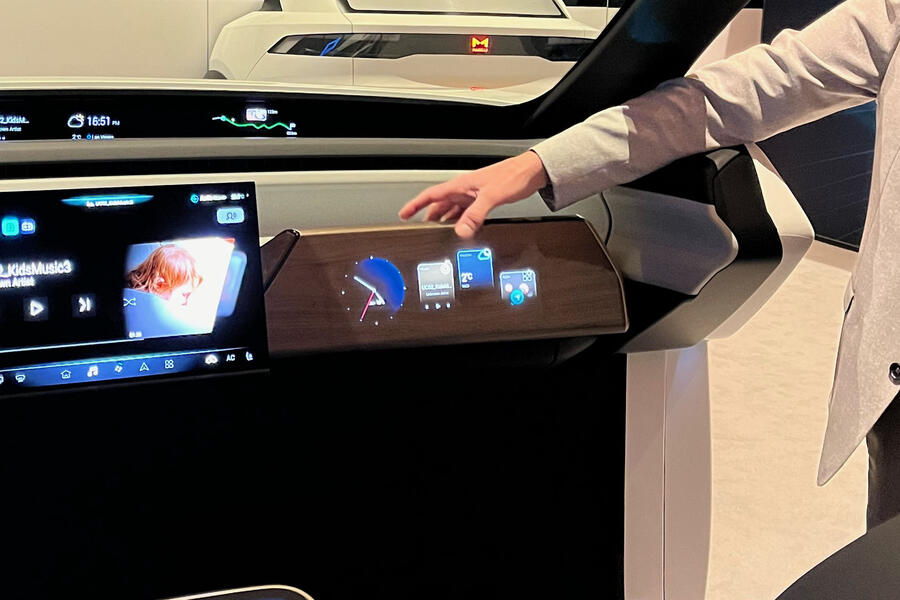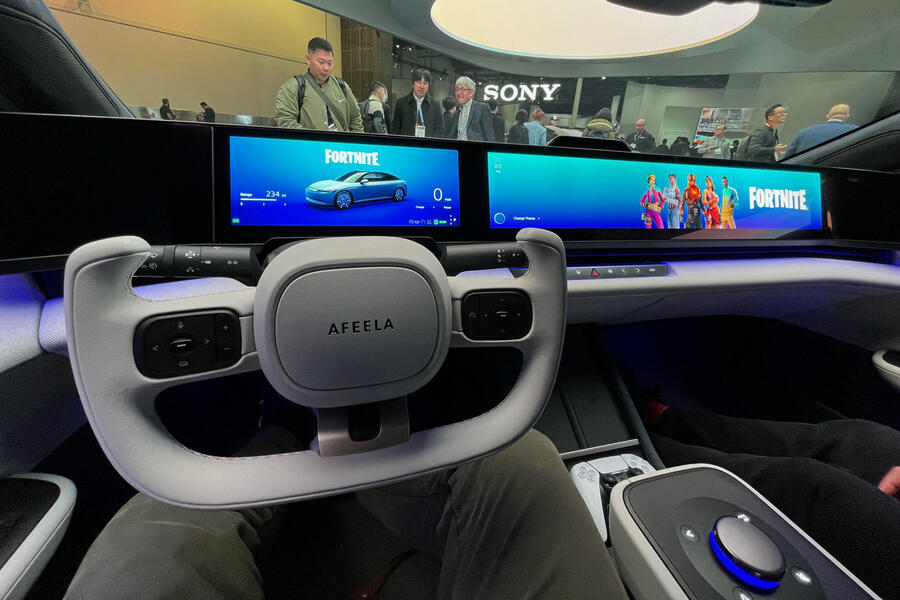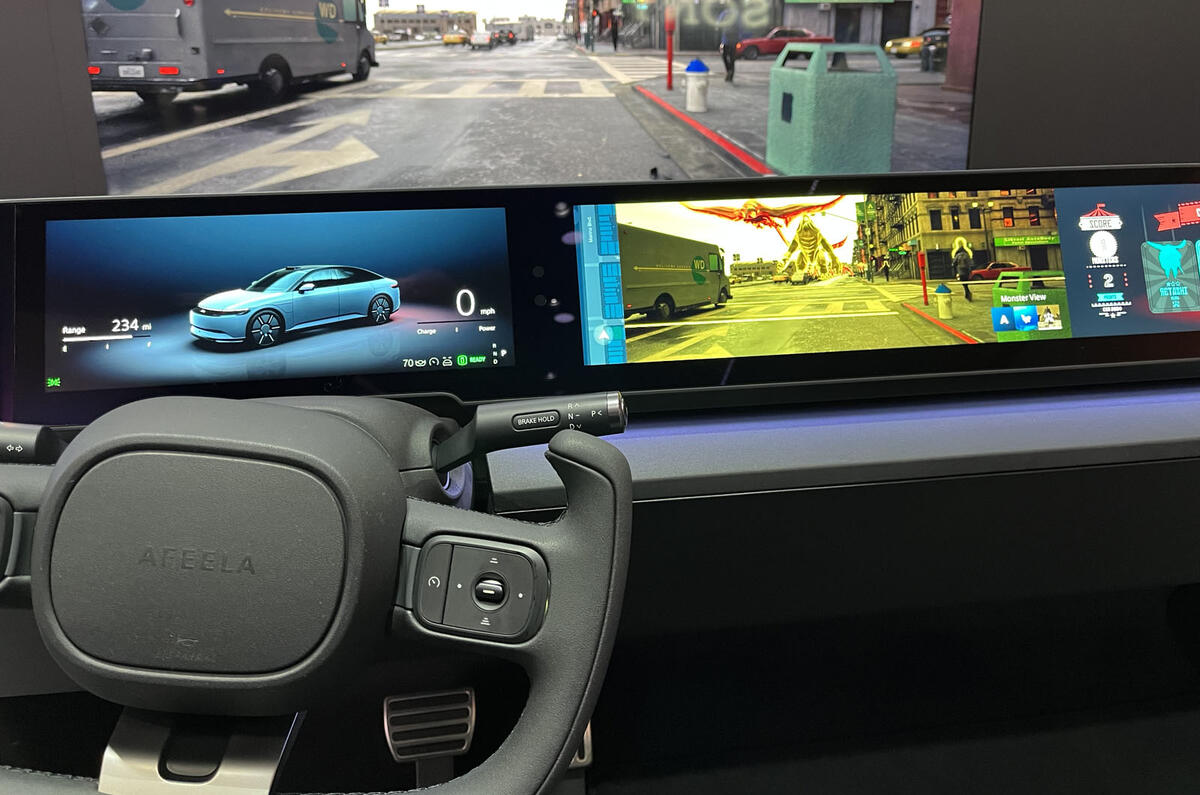Wooden touchscreens, augmented-reality goggles, 'floating' crystal displays, movie themes, hovering avatars and AI chatbots: all took a bow in the automotive zone at CES this year.
The tech show has grown to the point that it now offers one of the clearest gauges of what we can expect by way of tech in the next generation of cars.
This year, the message was 4K UHD clear: car makers see the cabin and its digital transformation as one of the biggest motoring battlegrounds going forward, despite the fact that delays in the move to autonomous cars means the driver won’t be able to enjoy all that’s on offer. In fact, the inescapable conclusion from the automotive side of CES was ‘RIP the dashboard button’.
“You will see even more screens in the car," Mercedes-Benz chief technology officer Markus Schäfer told Autocar at the event. The premium brand will roll out more cars with a seamless screen spanning the width of the dashboard, using gaming graphics to create a “stunning visualisation”, Schäfer promised.
The buzzphrase from the show from the automotive side was without a doubt ‘software-defined car’. Car makers are working alongside their key technology suppliers to overhaul the electronic architecture of future platforms to enable superchips from the likes of Qualcomm to power advanced software that will allow multiple updates to introduce new features on these ever-expanding screens.
The forecast is that many car customers won’t tolerate downgrades from their smartphone useability.
“People like my wife and daughters want mobility with a lot of bells and whistles to continue their digital experience,” said Jean-Marie Lapeyre, chief automotive technology and innovation officer at consultancy Capgemini. “They don't care about the size of the engine or how fast it can go; they just want it to go safely from place A to place B.”
In the far future, the car will probably drive there for them, but autonomy is being outpaced by digital cabin experience.
“Penetration of [autonomous cars] will be very slow, and it will not be affordable to a large audience,” said Christian Sobottka, president of Samsung-owned Harman Automotive, which describes itself as the world’s largest supplier of infotainment systems. “The desire of customers to have the car behave like all the other consumer electronics devices will push the in-cabin evolution much faster.”
Harman showed off an automotive grade version of OLED screen technology, called Neo QLED, that it says retains the sharpness but is cheaper and uses less power.
“Everybody has great television sets at home, and then you enter in your car and you have this greyish TFT display,” Sobottka said.
Also on the Harman stand was an AR head-up display that spreads information across the lower part of the car's windscreen.
Meanwhile, Marelli showed off a ‘smart surface’ that looked like wood when powered down but acted just like a touchscreen when called for. The display, although matt, was crisp enough to watch a movie and had the added benefit of not showing fingerprints.

Marelli's wooden smart surface
Continental unveiled a 10in micro-LED screen encased in a Swarovski crystal housing that gave it a floating effect described as “minimalist luxury”.
Also on its stand was its Curved In2Visible screen, which melded the dash display and central touchscreen and could be bent to better follow the driver’s sightline.
Qualcomm also showed off a full-length screen in its demonstrator concept car that featured innovations such as seat-specific voice commands.
One of the clearest visions of how this software-defined in-cabin digital smorgasbord will work in reality was shown by Afeela, the new car brand created by Honda and Sony.
Its electric saloon, due 2026, was rigged up to showcase input from Sony’s entertainment and gaming divisions to augment driving functions.
You could choose themes for the dashboard-width screen, such as Spiderman and Fortnite. And in a separate driver simulator, augmented reality driven by PlayStation linked to gaming graphics programme Unreal Engine 5.3 overlaid monsters and underwater elements to a camera feed from the road ahead.
The distraction was such that we ‘crashed’ several times, which is worrying, given that Afeela has said it will “potentially reach” only level three autonomy.

Afeela's screens can be given different themes, such as video game Fortnite
Other digital innovations were more driver-friendly. BMW demonstrated some surprisingly effective AR glasses for the driver to overlay sat-nav instructions on the road ahead, as well as other information. The glasses were wired to the car as the company figures out how to add big enough batteries while ensuring that they’re still comfortable to wear.
Volkswagen announced that it had added ChatGPT AI to the voice-control functionality of its new cars running its fourth-generation modular infotainment system, including the new VW Passat, VW Golf and updated ID electric models.
It ran mostly smoothly, giving hope that drivers will come to trust voice commands going forward.
Mercedes-Benz also announced a wider rollout of in-car AI functionality after running a limited beta trial of embedded ChatGPT in the US.
For Volkswagen, the ChatGPT feature was representative of the sort of functionality that’s possible to integrate at speed into 'software-defined' cars. It took three months from concept to announcement, with downloads to customer cars due to start in the spring.
“You might not recognise that there's a new functionality, because it's just a switch we do on the back end,” said Kai Grünitz, the brand's head of technical development.
The hope of car makers is that, while many features will be offered for free, other downloadable functions will be appealing enough to dip into the wallet for. This is the ‘ice cold in Alex’ that makes the painful and expensive shift to software-defined architectures all worth it in the end.
While the work to make every feature upgradable continues apace, the motive to pay more for it is still uncertain.
“It doesn't solve the question on whether we have attractive stuff out there for the end user which then triggers the willingness to pay. This is still a big equation which still needs to be resolved,” said Sobottka.
Harman and Marelli were among those making the case for ‘wellness’ as one potential source of income, utilising ever more sophisticated driver-monitoring cameras and AI functions to assess your state of mind and react accordingly, whether through screen, sound or massaging seats.
“We know people are [collectively] paying $140 billion to alleviate back-pain issues,” said Sobottka. “If you could make the car a space of wellness and wellbeing through the interaction of these different products, people for sure would be willing to pay for that.”
Before they can unlock this new revenue, car makers have to redesign their electronic architectures to power and update the software. The screens will help sell functions, but only reliability and updateability will ensure repeat custom.




Add your comment